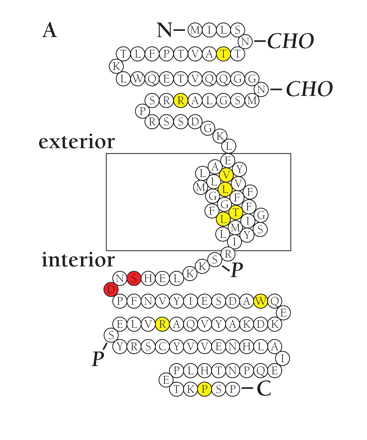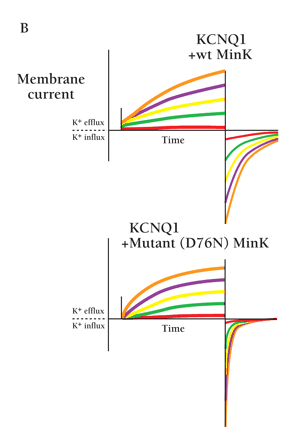
- Institution: Stanford Univ Med Ctr Lane Med Lib/Periodical Dept/Rm L109
- Sign In as Member / Individual
Potassium Channel Subunits: The MiRP Family


Inherited mutations in the MinK-encoding gene KCNE1 compromise VGK currents and are associated with arrhythmia.
A. Schematic of the MinK peptide indicating disease-associated mutations. Residues highlighted in red represent missense mutations (i.e., S74L and D76N) that have been functionally characterized and clinically associated with arrhythmia (see text for details; also see panel B); residues highlighted in yellow represent mutations that occur in individuals with arrhythmia but that have not been functionally characterized (CHO, predicted sites of glycosylation; P, predicted sites of phosphorylation).
B. Characterization of IKs current arising from mutant MinK. Currents were studied in Xenopus laevis oocytes and measured in excised inside-out patches in symmetrical 100 mM KCl. The KCNQ1 protein was co-expressed either with wild-type MinK or mutant form of MinK that is associated with Jervell and Lange-Nielsen syndrome. Patches were held at -60 mV and depolarized for 6 s to voltages of 0 (red), 20 (green), 40 (yellow), 60 (purple), and 80 (orange) mV. (NB: The reduction in single channel conductance associated with the mutant MinK is not indicated; see text for details.)


